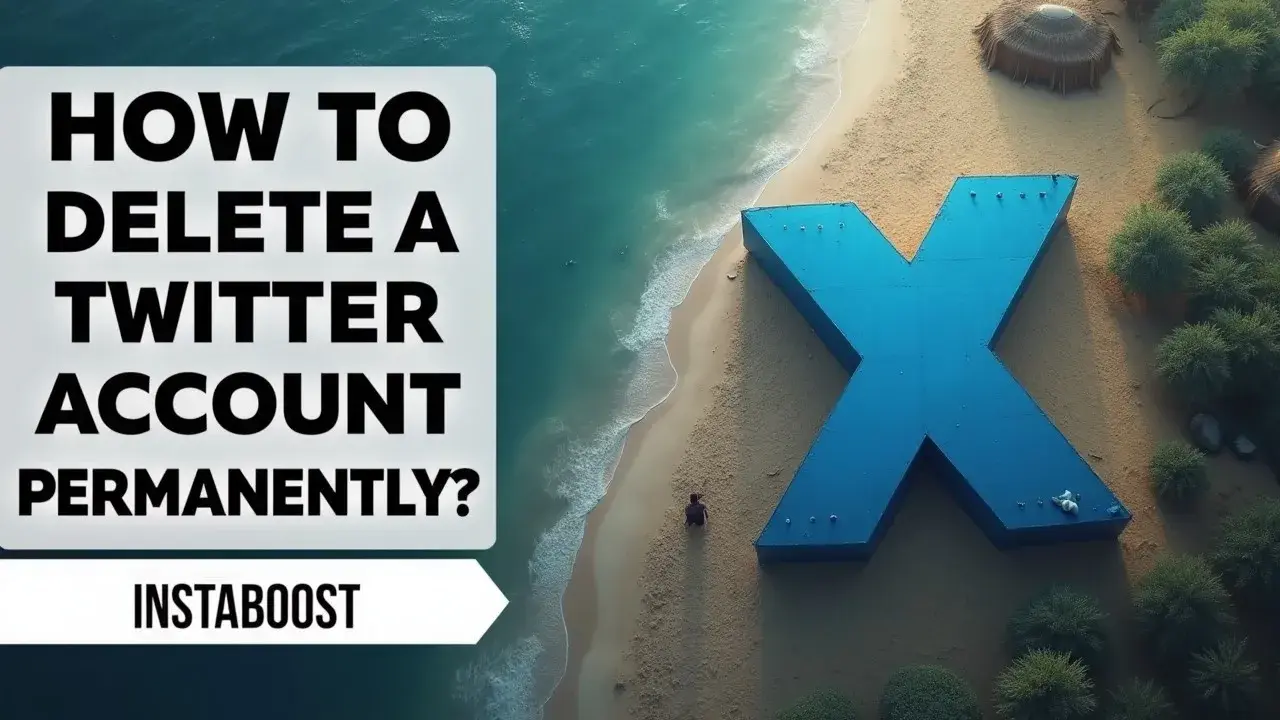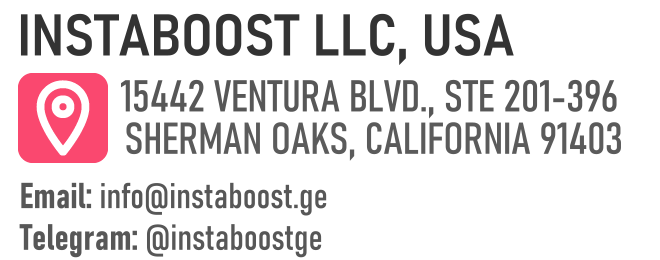How to Permanently Delete a X (Twitter) Account?
Permanent deletion is straightforward when planned with a brief setup. Start by backing up data in the first hour, then confirm the removal steps so the process can run without interruptions. Treat it as a clean reset to redirect attention toward areas that compound results. For content efforts elsewhere, align timing, crisp messaging, and early engagement, monitoring the first hour and applying a measured boost to maintain momentum as a smart path.
A Clean Exit Starts with A Clear Plan
A clean exit starts with a clear plan. Deleting a Twitter account permanently is straightforward when you set the sequence and stick to it. Save what matters, confirm settings, then let the deactivation window do its job. Before you move, export your archive so you keep creative assets, DM receipts, and audience insights that can inform future channels; it’s also useful context if you previously focused on organic growth on Twitter and want to understand what to replicate elsewhere. That backup takes minutes and preserves the work you’ve already paid for in time and momentum.
If your brand runs on x.com referrals, map any links in bios, ads, or creator collabs and swap them now so you don’t strand traffic. Pausing ads is smart, and if you’re sunsetting a handle after a campaign, a short, targeted promotion can point followers to your next home – newsletter, community, or a platform with better fit – while you still have reach.
This works when your copy is crisp, comments are real, and analytics are clean enough to measure the handoff. Individuals can use the same playbook at a smaller scale: post a pinned sign-off, capture key contacts, and redirect to where you’ll actually engage. The quiet win is timing – start when you can watch the first hour for confirmation emails and any retention signals, then let the 30-day deactivation clock run without logging in, which resets the timer.
This works when your copy is crisp, comments are real, and analytics are clean enough to measure the handoff. Individuals can use the same playbook at a smaller scale: post a pinned sign-off, capture key contacts, and redirect to where you’ll actually engage. The quiet win is timing – start when you can watch the first hour for confirmation emails and any retention signals, then let the 30-day deactivation clock run without logging in, which resets the timer.
If you’re closing for focus or compliance, use reputable tools for backups and scheduling, keep safeguards like two-factor on until the end, and document the steps so your team doesn’t reactivate by habit. The result is a tidy reset that preserves value, prevents orphaned spend, and redirects attention to channels where your strategy has a better payoff.

Why This Process Works (and Who’s Behind It)
Sometimes traction doesn’t show up in analytics – it shows up in replies. When you’re figuring out how to delete a Twitter account permanently, credibility comes from knowing the rules, the data boundaries, and the edge cases people actually hit. Twitter’s 30‑day deactivation window isn’t a gimmick. It’s a safeguard that preserves handle ownership and gives you a recovery buffer if a stakeholder changes course, a campaign resurfaces, or legal retention standards require access. The smart move is to match your exit plan to verifiable sources. Use Twitter’s help center for policy and timing, and run a light audit of connected apps so old login tokens don’t reanimate the account.
If you used third‑party schedulers, disconnect them cleanly before deactivation – queued posts can skew analytics and complicate the “permanent” part. Exporting your archive isn’t nostalgia. It’s leverage for future channels. DM transcripts, media rights, and engagement patterns can show which creator collabs, targeted promotion, or posting windows drove real comments versus vanity impressions, and remember that shortcuts such as buy real twitter followers only mask the signals you need to keep. Those are retention signals you can carry to platforms that now fit your goals. If you want to accelerate off‑platform reach during the transition, a short, measured promotion that points followers to your new hub works when it’s paired with clear CTAs and clean analytics.
Paid tools or trials can help when they’re reputable, matched to intent, and tracked with tagged links so you can see handoffs. One crisp insight: the best deletion plans start with an attribution snapshot. Once the account is gone, you lose a control group for your broader social strategy, and you’ll want that baseline to judge what you build next.
Map the Exit: Sequenced Steps, Safeguards, and Signal Checks
If your strategy fits on a napkin, pause and stress-test it. Treat “how to delete a Twitter account permanently” like a product sunset. Set a clear timeline, assign owners for every step, and build a reversible window into the plan. Start with an export to capture assets and DM receipts, and pull performance snapshots that surface retention signals, real comments, and creator collabs you can replicate elsewhere. If you ran targeted promotion or paid trials, tag those campaigns so you can trace what sparked early momentum; in audits I’ll often note a support tweet with X hearts as a proxy for whether the message actually resonated.
That makes it easier to rebuild the testing loop on channels matched to your audience’s current intent. Before deactivation, clean follower lists, revoke third-party access, and update bios on other platforms so traffic doesn’t hit a dead end. If you’re consolidating brands, park the handle with a placeholder profile and a pinned post for 30 days while deactivation runs. It preserves ownership and reduces support tickets. For paid accelerants, use reputable tools and verified ad accounts. Cheaper vendors can pollute clean analytics and blur attribution right when you need clarity.
During the deactivation window, monitor replies and DMs. Real-time feedback can flag support risks or legal retention items you should archive. When you’re confident the sequence holds, let the clock run – no half resurrections. This approach works when you pair disciplined timing with clean measurement: archive first, confirm settings, deactivate, then verify removal. It’s a smart reset that preserves what performs, prevents brand confusion, and gives you the data to reapply strong formats on channels where your audience already engages. For searchers comparing account deactivation vs deletion, the sequence above keeps options open without stalling momentum.
Reality Check: Push Back Before You Push Delete
This is fine. Everything’s fine. The algorithm’s fine. Maybe. Before you permanently delete a Twitter account, test the premise with real signals, not frustration. If your retention graph looks flat but replies, DMs, and creator mentions show pull, you might be reading performance through a noisy or incomplete lens.
Run a 10-day pause with a reversible window. Stop posting, pin a redirect tweet, then compare referral traffic, branded search, and customer support mentions to the prior 10 days. If sentiment improves and inbound falls, the exit looks validated. If branded queries or partner tags dip in ways that touch revenue, you’ve surfaced hidden value worth protecting. Smart inputs help. A small, targeted promotion through a reputable ads account and one creator collab can show whether reach is capped by timing or content – market fit, and if you’re sanity-checking view volatility against known baselines you can quietly buy X views as a calibration nudge while keeping attribution clean.
Keep the budget tight, match to intent, and use clean analytics so you can separate platform lift from campaign noise. If you proceed, a solid sunset plan covers handle-squatting risk, legal retention, and potential stakeholder reversals. Schedule the deactivation, export archives, and confirm ownership of adjacent assets like domains and customer support macros so you avoid dead ends. Pushback here isn’t foot-dragging. It’s a short, structured audit that protects against irreversible mistakes while keeping the option to shut down with confidence. The non-obvious insight is that deletion is a product decision disguised as housekeeping, and the right move often shows up only after you force a signal through real comments, targeted boosts, and a timed pause rather than waiting for the algorithm to confess.
Close the Loop: Announce, Archive, and Reallocate
Endings that feel too neat are usually a sign to slow down. A permanent Twitter deletion pays off when you close the loop with intent: tell people where you’re going, show that your data is backed up, and reallocate attention and ad spend to channels that compound. Treat the final 30 days like a soft landing. Pin a redirect to your newsletter, site, or community, schedule two reminders for different time zones, and update bios on partner pages so you don’t leave dead links. Export your archive and feed the CSV into your CRM or analytics to preserve reply sentiment, creator mentions, and referral patterns – all useful context for future targeting.
If momentum matters, a small, reputable promotion to the redirect post can catch latecomers, especially where authentic tweet shares are already part of the surrounding context and you have clean analytics to attribute carryover. After you confirm the deactivation countdown, set a day-28 nudge to re-check logins, handoff notes, and any auto-post hooks that could quietly reactivate the account. Then shift your testing loop. Replicate your top-performing Twitter topics on channels with stronger retention signals, and measure first-hour engagement, branded search, and assisted conversions against your prior baseline.
Keep a short reversible window checklist in case you uncover a contractual dependency or a customer support edge case. The smartest path is maintaining optionality until the deletion is final. Map the exit, pressure-test signals, and deliberately redirect traffic so the decision is less about walking away and more about focusing on where your audience actually builds.















